.jpg/1200px-Theodosian_Walls_of_Constantinople%2C_Istanbul_(37195956054).jpg)
ملفTheodosian Walls of Constantinople, Istanbul (37195956054).jpg المعرفة
The approximate location in the Theodosian walls where the city was breached by the Ottomans in 1453. The Golden Gate and the Marble King. The legend of the Marble King, which we will turn to below, is irrevocably linked to the Golden Gate (Χρυσεία Πύλη) that essentially superseded the main entrance reserved for the emperor and his retinue into the city when Theodosius II extended.
The Theodosian Walls of Constantinople (Photo taken November 2009) r/byzantium
The Walls of Constantinople are a series of defensive stone walls that have surrounded and protected the city of Constantinople since its founding as the new capital of the Roman Empire by Theodosius II. With numerous additions and modifications during their history, they were the last great fortification system of antiquity, and one of the most complex and elaborate systems ever built.
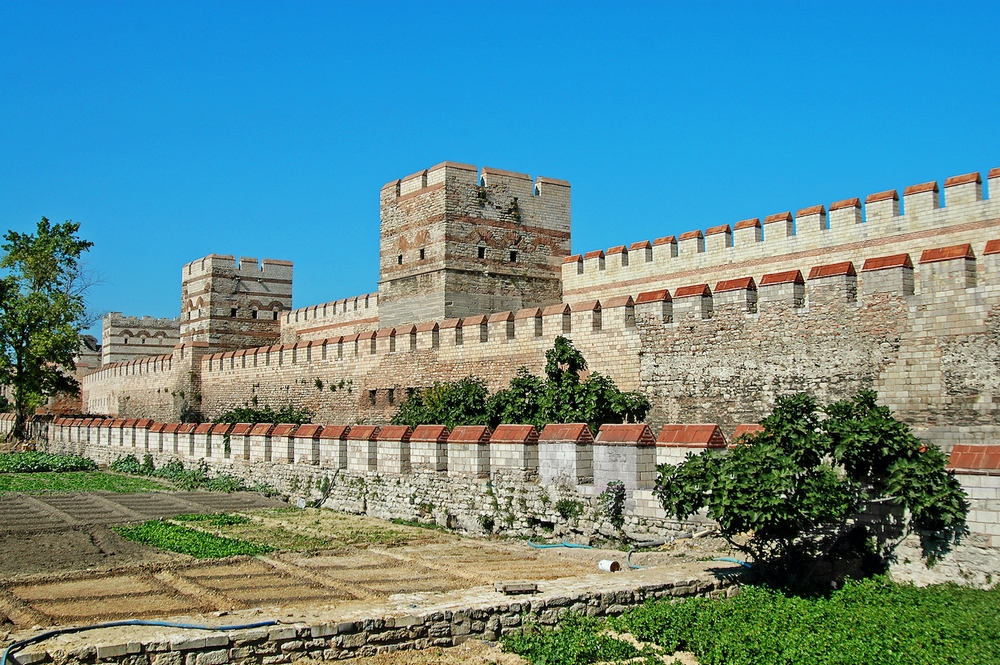
Seven Hills of Istanbul and Theodosian Walls
The wall was built in 412-414, surrounded an area of 12 km², was 12 m high, and had 96 towers that were about 18 m tall. Two related projects were the construction of the Aetius Cistern, close to the new walls, and improved Sea Walls (439). Section of the walls of Constantinople: Anthemius' wall, Cyrus' wall, battlements, and moat.

FileConstantinoplewall.jpg Wikitravel
The Theodosian Walls are the fortifications of Constantinople, capital of the Byzantine Empire, which were first built during the reign of Theodosius II (408-450 CE).Sometimes known as the Theodosian Long Walls, they built upon and extended earlier fortifications so that the city became impregnable to enemy sieges for 800 years. The fortifications were the largest and strongest ever built in.

Theodosian Walls in Constantinople
Amongst the most formidable structures ever built by the Romans would be the massive triple layered walls of Constantinople. Today we dive into the details o.

Theodosian Walls of Constantinople (Istanbul, Turkey) Nomadic Niko
A part of the old Constantinople walls with towers in Istanbul, Turkey.. As the city grew, the famous double line of the Theodosian Walls was built in the 5th century. Although the other sections of the walls were less elaborate, they were, when well-manned, almost impregnable for any medieval besieger.

The Theodosian Walls that helped protect Constantinople for almost 1,000 years Historical
The Theodosian system was completed in 447 with the addition of an outer wall and moat-a response to a near calamity, when a devastating earthquake seriously damaged the walls and toppled 57 towers at the very moment that Attila and his Hunnic armies were bearing down on Constantinople.

Theodosian Walls of Constantinople (Istanbul, Turkey) Nomadic Niko
The Fall (or Sack) of Constantinople was not only a turning point for the city, but it was also a turning point of the Theodosian Walls as a "lieu de memoire." No longer is the wall associated with usefulness in defense as it failed the city.. The rise and fall of Constantinople coincides with the rise and fall of the.

Theodosian Walls of Constantinople (Istanbul, Turkey) Nomadic Niko
Productions, THFE. " Total War History: The Theodosian Walls ." World History Encyclopedia. World History Encyclopedia, 12 May 2015. Web. 15 Dec 2023. Amongst the most formidable structures ever built by the Romans would be the massive triple layered walls of Constantinople. Today we dive into the details of.
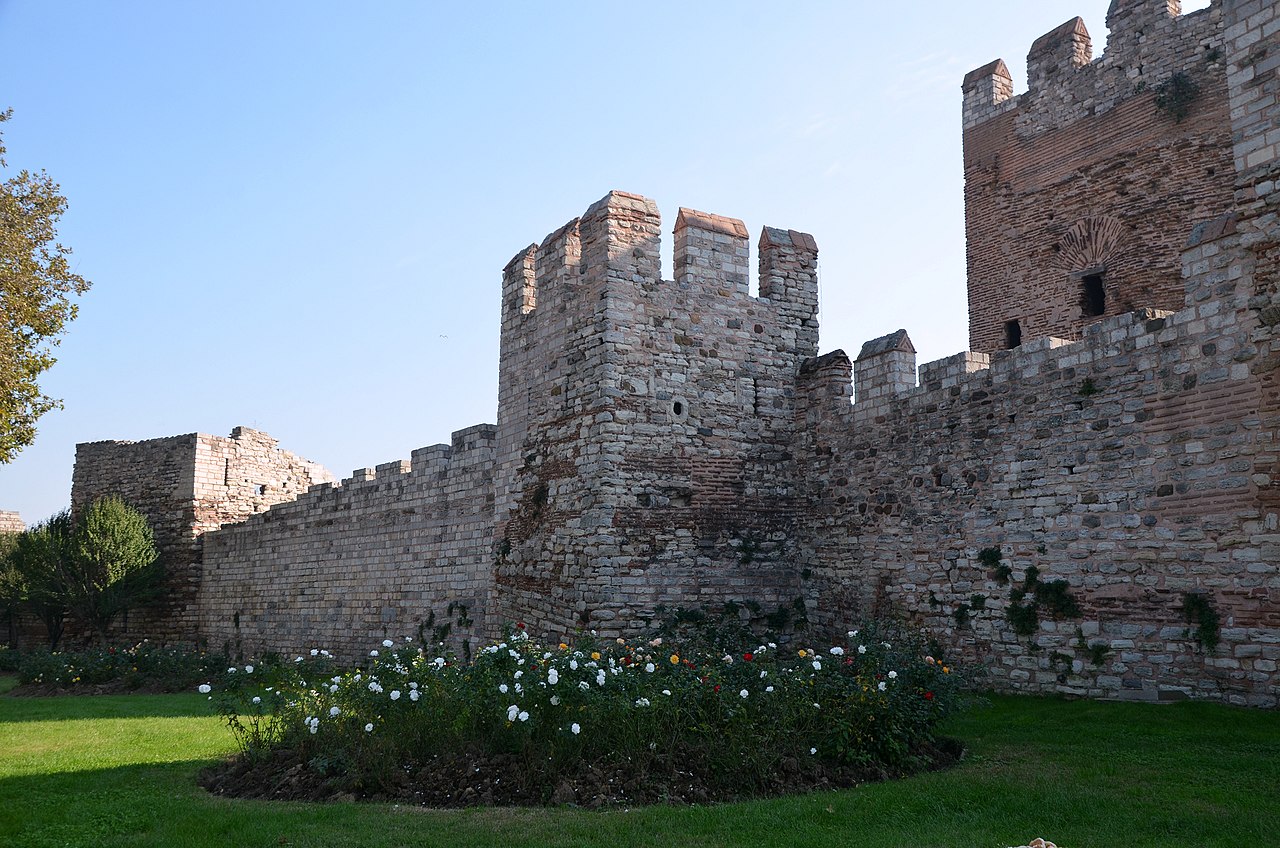
The Theodosian Walls of Ancient Byzantium Brewminate A Bold Blend of News and Ideas
Istanbul walls, Land Walls of Constantinople, Byzantine Walls, and the Theodosian Wall are all popular names for the fascinating ancient ramparts constructed nearly two millennia ago to defend this historic city.. Known by many names, the unique and historic Istanbul walls are not yet widely known to mass tourism. Visitors frequently arrive in Istanbul with an itinerary full of grand mosques.

Theodosian Walls of Constantinople (Istanbul, Turkey) Nomadic Niko
A mural depicting Constantinople and its walls. Credit: Argos' Dad / CC BY-SA 3.0 / Wikimedia Commons Construction of the Theodosian Walls. The Theodosian Walls were constructed in two distinct phases during the reign of Theodosius II (408-450 AD) The initial phase of construction, which began around 408 AD and was overseen by the Praetorian Prefect Anthemius, was undertaken on behalf of.

Theodosian Walls in Constantinople
The Theodosian Walls were an impenetrable defense system built by Emperor Theodosius II to protect the city of Constantinople. Jul 14, 2023 • By Vedran Bileta, MA in Late Antique, Byzantine, and Early Modern History, BA in History. Built in the early fifth century CE by the orders of Emperor Theodosius II, the Theodosian Walls stood as the.

Tower, Theodosian Walls (Illustration) World History Encyclopedia
An excellent map of Constantinople showing an outline of the approximate position of the Constantinian Wall as well as the later Theodosian Walls. By Cplakidas - CC BY-SA 3.0. Construction on the Theodosian Walls was actually thought to have been started while their namesake, Theodosius II, was still an infant.
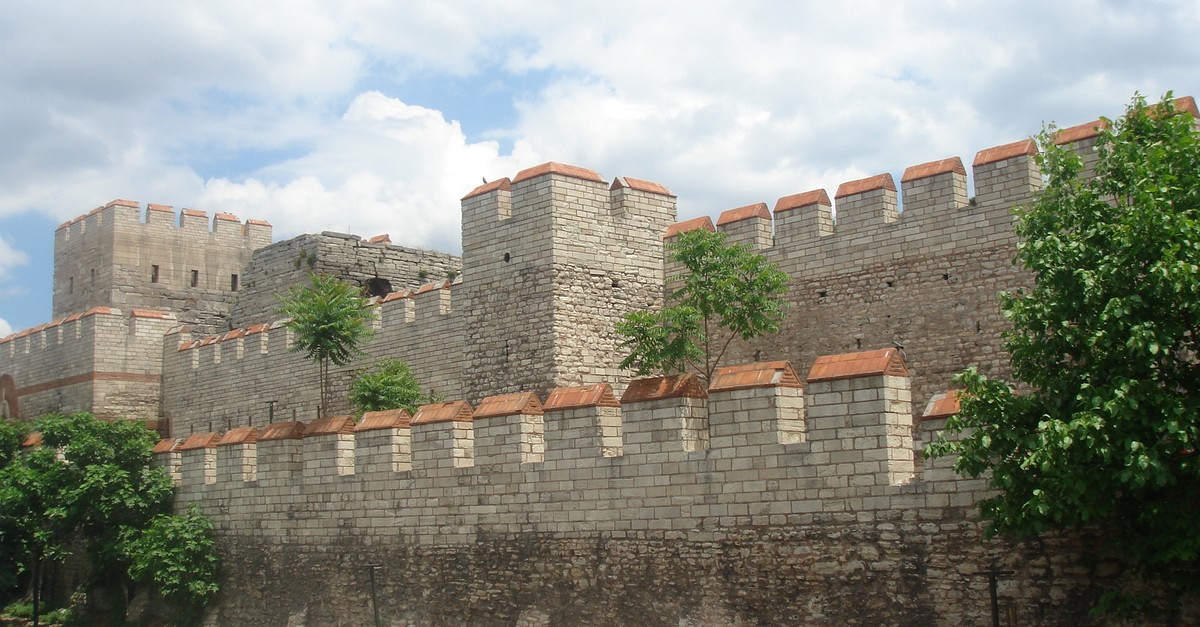
Theodosian Walls World History Encyclopedia
The Theodosian Walls of Constantinople were one of the most powerful defensive structures from ancient and medieval times. Built in the early fifth century AD, during the reign of emperor Theodosius II (thus the name), the Theodosian Walls fulfilled their primary task for a thousand years. They protected the city of Constantinople, the capital.
Theodosian Walls of Constantinople, Ottoman Empire. 1870. (1760x1364) r/HistoryPorn
THE GATES IN THE THEODOSIAN WALLS—continued. Alexander Van Millingen. Byzantine Constantinople. Published online: 5 November 2011. Article. Physical evidence revealed during the cleaning and the excavations of the outer wall of the land walls of Constantinople at the Porta Romanus. Ahmet Ersen.

What Are the Theodosian Walls (of Constantinople)?
The Theodosian Walls, when finally completed, measured around 12 km in length, defending the approaches to Constantinople by land. The walls consisted of three lines of defense. The would-be conqueror had first to cross the wide moat (filled with water), protected by the low wall, 1.5 meters tall.